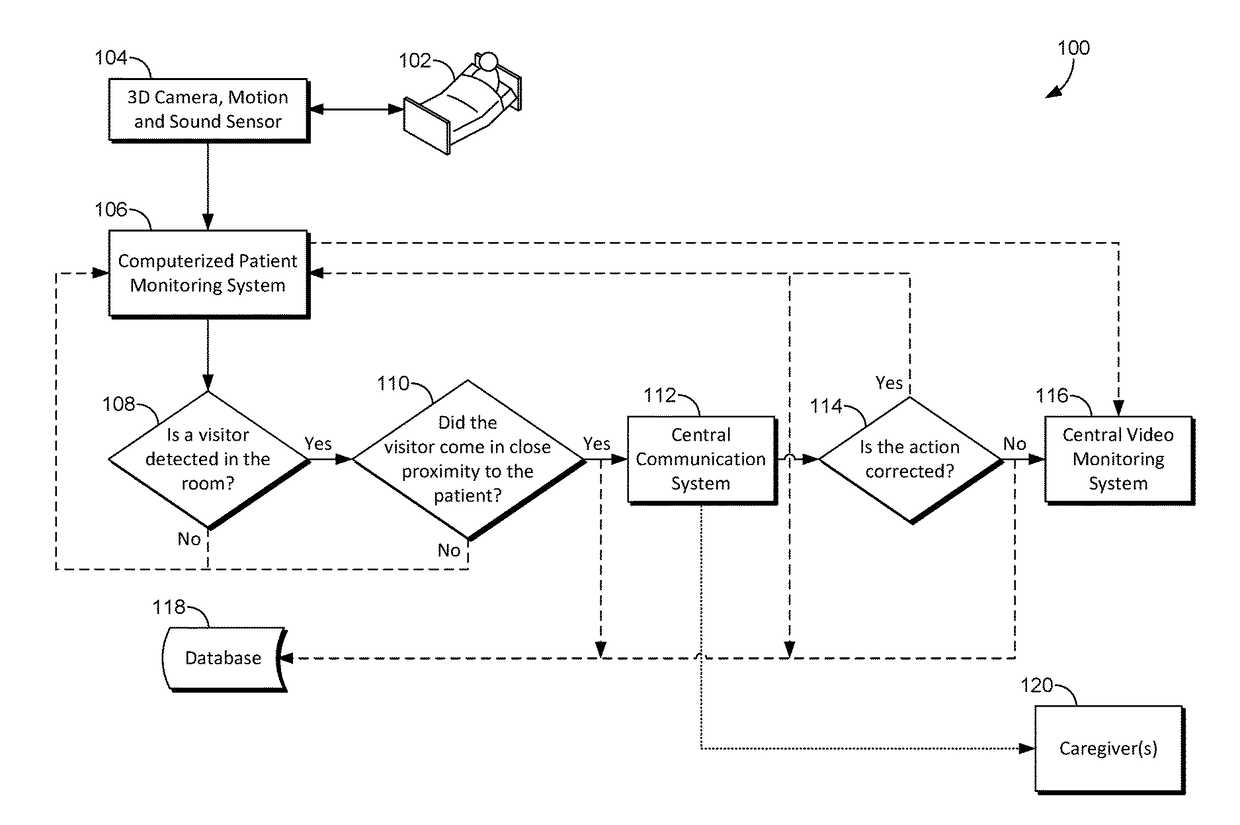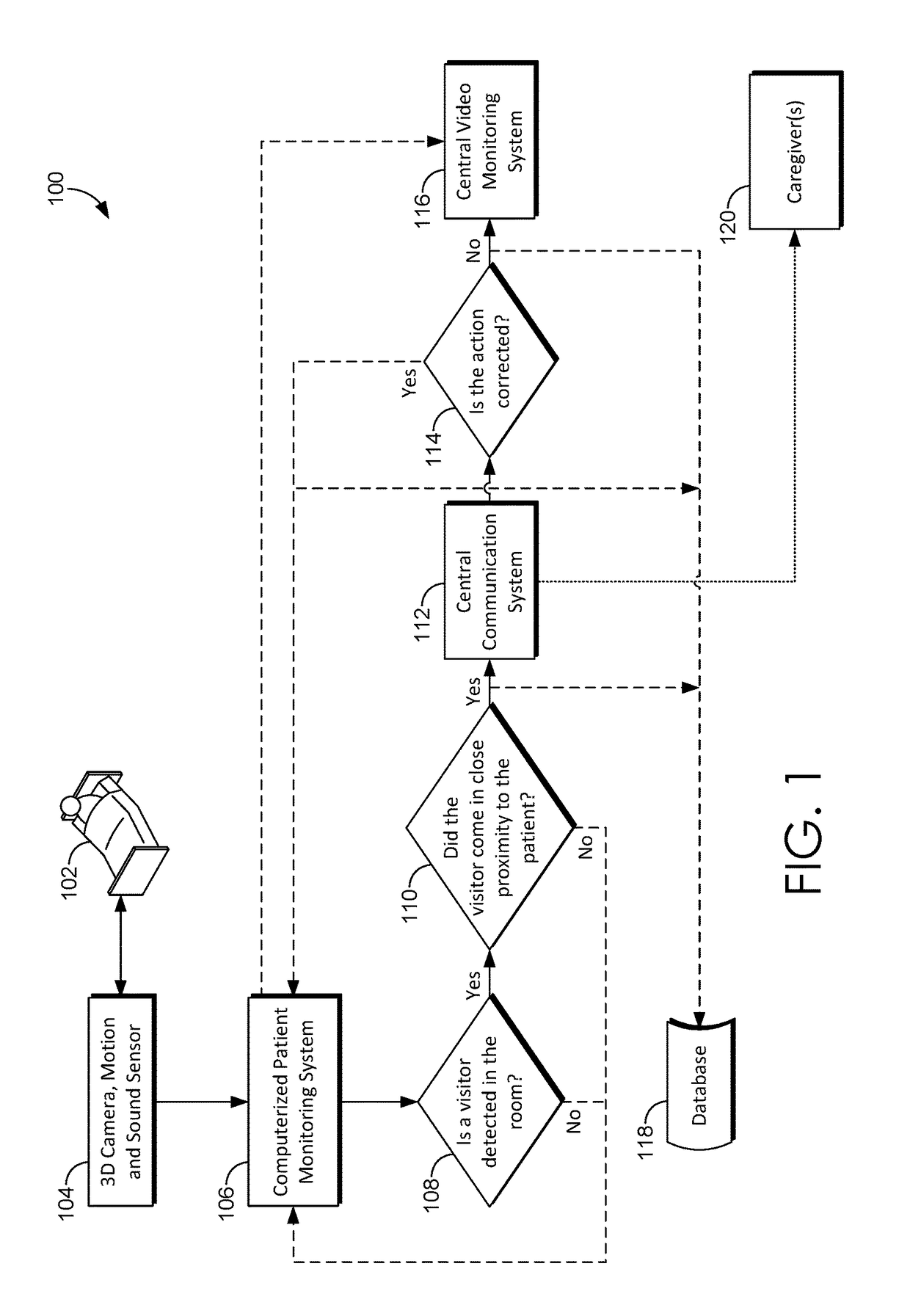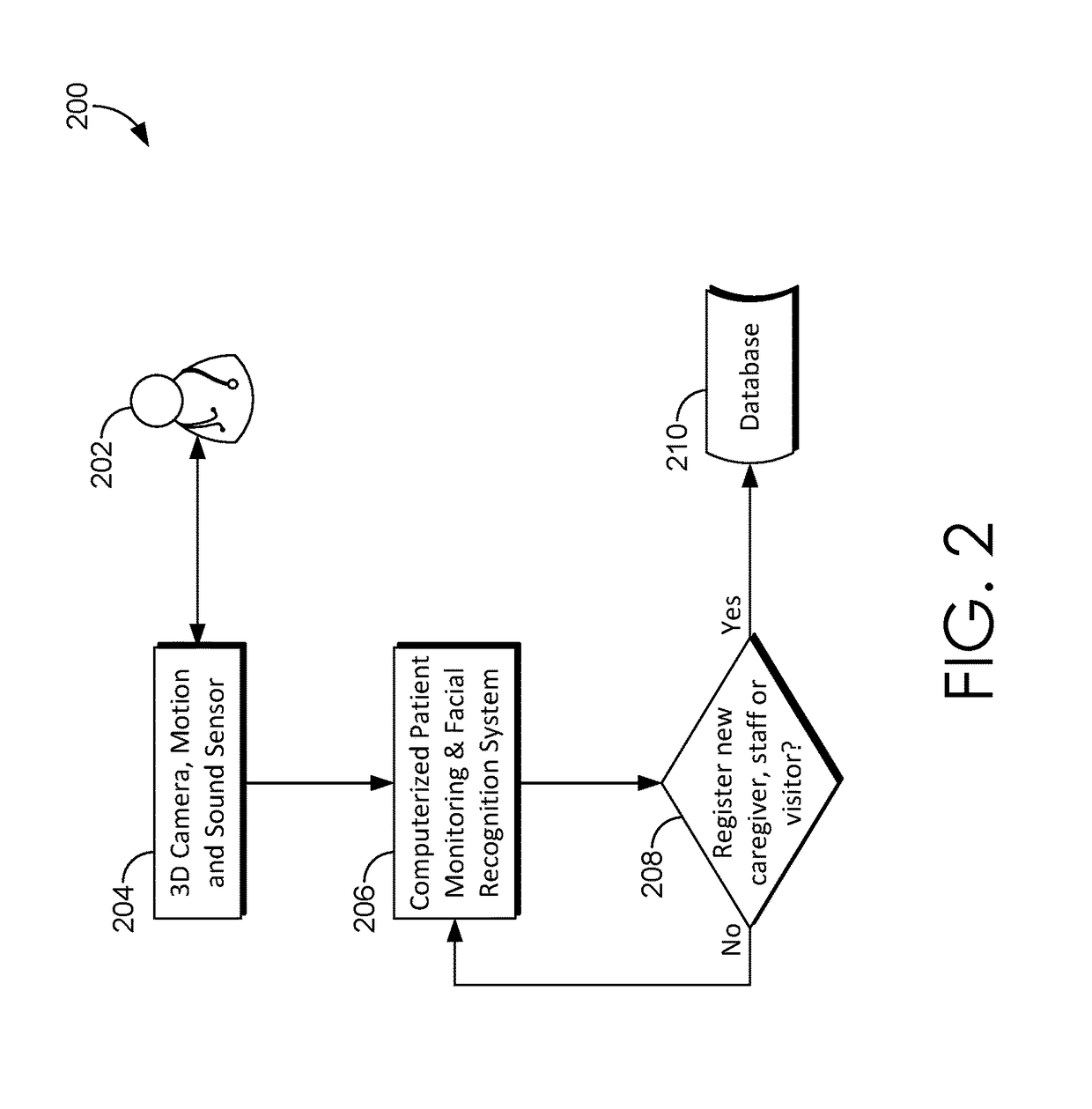Detecting unauthorized visitors
a technology for detecting unauthorized visitors and visitors, applied in the field of detecting unauthorized visitors, can solve the problems of consuming many resources, securing patients and equipment (e.g., medical devices), and unable to prevent authorized visitors from entering the facility
- Summary
- Abstract
- Description
- Claims
- Application Information
AI Technical Summary
Benefits of technology
Problems solved by technology
Method used
Image
Examples
Embodiment Construction
[0013]As noted in the Background, medical facilities, such as hospitals, face many challenges in addition to simply caring for patients. For example, securing patients and equipment (e.g., medical devices) consumes many resources and current methods lack effectiveness. In addition to requiring personnel to physically monitor locations within the facility, visitor logs and visitor badges, and radio-frequency identification (RFID) technology are often utilized to control access to certain locations within the facility. However, each of these require subjective decision-making and are prone to error by the personnel monitoring the locations or assisting visitors signing a visitor log and issuing visitor badges accordingly. Further, none of these methods necessarily prevent an authorized visitor from breaching areas of the facility where the authorized visitor is not authorized. For example, a visitor may be authorized to visit a particular patient but is not authorized to visit another...
PUM
 Login to View More
Login to View More Abstract
Description
Claims
Application Information
 Login to View More
Login to View More - R&D
- Intellectual Property
- Life Sciences
- Materials
- Tech Scout
- Unparalleled Data Quality
- Higher Quality Content
- 60% Fewer Hallucinations
Browse by: Latest US Patents, China's latest patents, Technical Efficacy Thesaurus, Application Domain, Technology Topic, Popular Technical Reports.
© 2025 PatSnap. All rights reserved.Legal|Privacy policy|Modern Slavery Act Transparency Statement|Sitemap|About US| Contact US: help@patsnap.com



